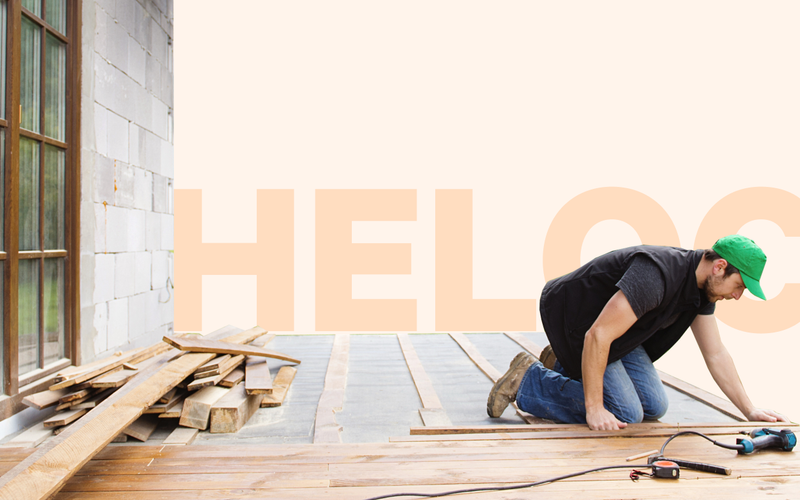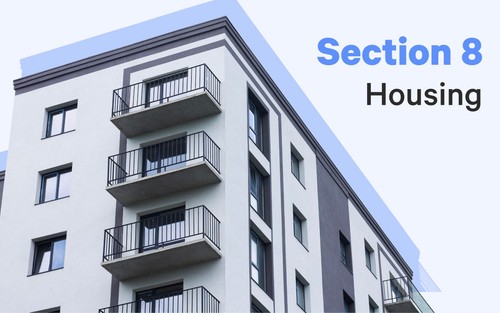A home equity line of credit, or “HELOC” for short, is a loan option available to homeowners. HELOCs are a way for homeowners to tap into the equity they’ve built up without selling their homes, and at low rates.
Like all loans or lines of credit, HELOCs have pros and cons. That’s why we’ve put together this quick guide to help determine whether a HELOC is right for you.
What is a Home Equity Line of Credit?
According to Investopedia, a HELOC is a secured line of credit that uses the equity you have built in your home as collateral. As a result, HELOCs tend to have higher credit limits and better interest rates than standard unsecured credit cards or personal loans.
HELOCs are a great alternative to cash-out refinancing or a second mortgage.
That’s why homeowners often use HELOCs to finance major purchases that can have variable costs like home improvement projects or an addition. Real estate investors use HELOCs to finance home renovations on their investment properties. Other borrowers use it for high-interest debt consolidation at lower rates.
Home equity lines of credit can be a good option for many; however, they come with some risks. Use this guide to understand HELOCs better before meeting with your financial advisor. They’ll help you determine whether a HELOC is the best option for your needs.
How does a HELOC work?
A home equity line of credit is based on the equity you have built in your home. Therefore, the amount of credit available is based on your home’s equity.
Here’s a quick equation to help you calculate the equity you may have in your home.
The estimated value of your home – outstanding balance of mortgage = Your estimated equity
Here’s an example of how this works.
Let’s say your home has an estimated market value of $250,000, and you owe $110,000 on your mortgage. Using the simple equation above, you’d subtract $110,000 from $250,000 to get estimated equity of $140,000. This determines the amount of money you may get through a HELOC or your line amount.
The above equation gives you an estimate. Your lender will use the National Multiple Listing Service (NMLS) to determine the market value of your home.
Lenders will use your equity to determine your loan-to-value (LTV) ratio. It helps a lender decide whether you’ll have to pay for private mortgage insurance (PMI). Your LTV needs to be 80% or less to avoid PMI.
Here’s how to calculate LTV:
Current loan balance ÷ Current appraised value = LTV
Using the example above, we’d divide $110,000 by $250,000 and get an LTV of .44, or 44%.
Now that you’ve determined your equity and LTV, you need to estimate your combined loan-to-value ratio (CLTV). This is simply adding your desired credit limit to your current mortgage balance and dividing it by your current appraised value.
Like this:
(Current mortgage balance + Desired credit limit) ÷ Current appraised value = CLTV
Using our example, let’s say we want to borrow $75,000 to make home improvements. We’d add $75,000 to $110,000 (current mortgage balance) and get $185,000. We divide that from $250,000 (our estimated value) and get a CLTV of .74 or 74%.
Most lenders require a CLTV of 85% or less for a HELOC.
However, having equity and a good CLTV doesn’t mean you will qualify for a HELOC. As with all loans, lenders will also review your creditworthiness before issuing a HELOC. Creditworthiness is determined by several factors, including your credit history, credit score, and debt-to-income ratio.
As mentioned above, HELOC interest rates are generally lower than those of unsecured credit cards or personal loans. However, it’s crucial to note that HELOCs usually have variable rates. That means they can increase or decrease based on the market.
Most HELOCs also have low or no origination or application fees. Many lenders charge membership or annual fees to keep your line of credit open. Many also require minimum payments, either a percentage of your loan amount or a fixed monthly payment. And some lenders will give you a rate discount if you withdraw a certain amount within a set period or set up automatic payments from your checking account.
HELOC terms vary by lender. Most have a 10-year draw period with a 15- to 20-year repayment period. A draw period is a fixed amount of time during which a borrower may “draw,” or use, available funds. Borrowers can use up to the credit line limit of their HELOC during the draw period and make interest-only payments. HELOC funds are unavailable after the draw period ends, and borrowers must start paying back the balance owed on their credit line.
When used wisely, a home equity line of credit can be an excellent tool for homeowners and real estate investors to tap into the equity of their properties.
How to qualify for a HELOC
Below are standard requirements for borrowers:
- More than 15% equity in their home
- LTV below 80%
- 600+ credit score
- A debt-to-income ratio of 40% or less
- Two years of verifiable income history
You’ll notice that many of the above requirements are also needed to be a well-qualified borrower for a credit card or any other type of loan.
However, with a HELOC, being a well-qualified borrower also benefits you. Here’s why. Well-qualified borrowers may be able to access up to 85% of their home’s equity. They’ll also qualify for a prime rate and lower annual percentage rate.
Each lender has its requirements, so be sure to check with yours before applying for a HELOC.
The difference between Home Equity Loans and HELOCs
Home equity lines of credit and home equity loans sound similar, but they’re pretty different.
Like a HELOC, a home equity loan is a loan option that enables a homeowner to borrow money by leveraging the equity in their home. However, unlike a HELOC, the loan amount is provided in one lump sum, which makes it a good option for significant purchases with fixed costs. Home equity loans also have fixed interest rates and are paid back in fixed monthly installments. These payments are made in addition to your monthly mortgage payment. That’s why a home equity loan is often referred to as a second mortgage.
Here’s a quick comparison of home equity loans and HELOCs.
The difference between a cash-out refinance and HELOC
A home equity line of credit may seem like cash-out refinancing, but they’re very different.
Like a HELOC, a cash-out refinance is a way for homeowners to borrow against their home’s equity. Unlike a HELOC, a cash-out refinance pays off your existing mortgage first. The result? When you close, you get a lump sum minus taxes, closing costs, and property insurance. You can also start over with a new mortgage loan, terms, and payment authorization schedule. A cash-out refinance can either have a fixed or adjustable rate depending on the lender.
The pros and cons of HELOCs
A home equity line of credit is a lot like taking out another credit card. It has advantages and disadvantages. Here’s a closer look at them.
Pros of HELOCs
- Easy to get: Compared to unsecured loan options, HELOCs are relatively easy to get. You simply need to meet the lender’s requirements.
- You can have multiple HELOCs on one property: There is technically no limit to the number of HELOCs you can have on one property. Most lenders allow well-qualified borrowers to access up to 85% of their home’s equity. So, if your home value continues to increase, you can continue to increase your line of credit.
- Use only the funds you need: That’s right. Unlike a personal or home equity loan, you don’t have to use all the funds you are qualified to get. For example, let’s say you qualified for $50,000 to renovate your kitchen and only needed $35,000. If you took out a home equity loan to finance your renovation, you’d owe $50,000. With a HELOC, you’d only owe the $35,000 you drew.
Cons of HELOCs
- Variable interest rates: This is a pro when interest rates are low, but it’s a major con when interest rates go up. The reason? It means your payment increases and often on short notice. This can make it hard to budget for your HELOC repayment.
- Risk of debt reloading: Debt reloading is taking out a new loan to pay off an existing loan to get a lower interest rate. It’s a form of debt consolidation that can get dangerous. Here’s why. It’s tempting to continuously tap into your home’s increasing equity to consolidate high-interest debt. But it comes with substantial risks. HELOCs have variable rates that depend on the market and use your home as collateral. If something happens to the market, like during the financial crisis, you could be unable to make payments on your HELOC, and your home could be foreclosed. This happened to many borrowers during the financial crisis.
- Interest payments aren’t entirely tax deductible: That’s right. Since 2017, interest paid on HELOCs and home equity loans is only tax deductible if it’s used to “buy, build, or substantially improve” a home. What’s more, the standard deduction keeps increasing, and, as a result, most HELOC interest payments aren’t high enough to compel taxpayers to itemize their deductions.
How to choose a HELOC
Selecting the right lender is key to getting the best deal on a HELOC. Here’s some advice on how to choose a HELOC.
- Pick a lender that is a Member of the FDIC: Why? The Federal Deposit Insurance Corporate (FDIC) is an independent agency created by the U.S. Congress to maintain and protect our financial system. Banks and lenders members of the FDIC must adhere to specific guidelines and regulations that protect you.
- Shop for the best HELOC rates: Remember, HELOC rates vary based on market conditions. Make sure you get the lowest rate.
- Review the HELOC’s terms closely: You’ll want to pay close attention to how long the initial HELOC rate lasts, when the draw period ends, when the balloon payments kick in, and if there are any inactivity fees.
Is a HELOC right for you?
That depends on your risk level and financial situation. Tapping your home’s equity before selling can be a tremendous financial tool. But a home equity line of credit requires you to use your home as collateral.
We advise you to consider how much money you need and how it will be used. Then, view the HELOCs’ interest rates, fees, and monthly payments. Are you comfortable with the risk? Is it something you can afford? Only you can answer your questions.
We encourage you to talk with a financial advisor to discuss your specific situation before determining if a HELOC is right for you.
Easily invest in rental properties with Arrived
You don’t need to take out a home equity line of credit to invest in real estate. Our platform lets you buy shares of rental properties, including vacation rentals, without taking out a HELOC or even paying a mortgage. We also handle all the property management, so you get the benefits of being a short-term property owner without the hassle. Browse our available properties to start investing in real estate today.
The opinions expressed in this article are for general informational purposes only and are not intended to provide specific advice or recommendations for any individual or on any specific security or investment product. The views reflected in the commentary are subject to change at any time without notice. View Arrived’s disclaimers.







